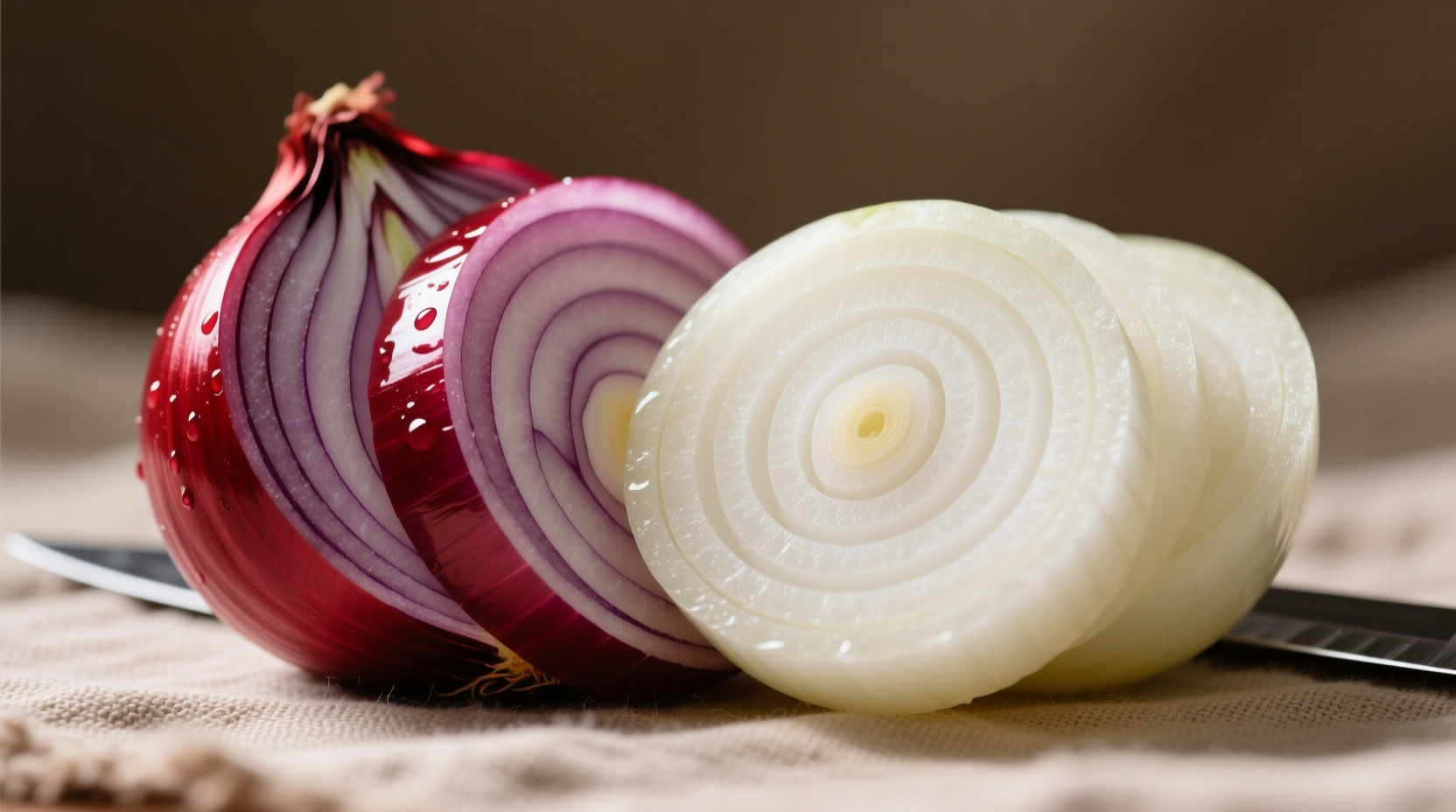See the Difference at a Glance
Before you chop, understand what sets these alliums apart. Both belong to the Allium cepa species but developed distinct traits through selective breeding. White onions contain higher levels of pyruvic acid—the compound responsible for that eye-watering punch—making them 20-30% more pungent when raw according to USDA agricultural studies. Red varieties developed anthocyanins (the same antioxidants in blueberries) that mellow their bite and create that striking purple hue.
| Characteristic | Red Onion | White Onion |
|---|---|---|
| Flavor Profile (Raw) | Mild, slightly sweet with subtle earthiness | Sharp, pungent, intense heat |
| Texture | Denser layers, softer when cooked | Crisper, retains firmness longer |
| Color Stability | Bleeds purple in acidic dishes (like vinegar-based salads) | Maintains bright white appearance |
| Best Culinary Uses | Raw applications: salads, burgers, pickling, garnishes | Cooking: salsas, Mexican dishes, frying, long-simmered sauces |
| Shelf Life | 2-3 weeks refrigerated | 4-6 weeks in cool, dark pantry |
Flavor Chemistry in Action
That sharp sting you feel with white onions? It’s science in your kitchen. White varieties contain 30% more syn-propanethial-S-oxide—the volatile compound that triggers tear production. But this intensity transforms beautifully when cooked. As culinary researcher Dr. Mary Englebrecht explains in Onion Chemistry and Culinary Applications, “White onions’ higher sulfur content caramelizes into rich umami notes ideal for French onion soup, while red onions’ anthocyanins break down under heat, turning bitter if overcooked.”

When Substitutions Backfire (And What to Do)
Ever made guacamole turn pink? That’s red onion bleeding its color into avocado. Or tried raw red onion in pico de gallo only to find it’s too mild? These common mistakes happen because each onion has non-negotiable roles:
- Never substitute red for white in: Authentic Mexican salsas, ceviche, or Bloody Marys—the color bleed ruins presentation and milder flavor gets lost
- White onion fails when: Used raw in delicate dishes like cucumber salads or egg salad—its sharpness overpowers subtle flavors
- Smart swap solution: For raw applications needing color, use red onion but soak slices in ice water for 10 minutes to reduce pungency. For cooked dishes requiring sharpness, add a pinch of white vinegar to red onions
Pro Storage Secrets for Maximum Freshness
White onions outlast red by weeks due to lower water content—a fact verified by USDA storage trials. But both hate moisture. Never refrigerate whole onions; the humidity causes mold. Instead:
- Store unpeeled bulbs in a cool, dark pantry in mesh bags
- Keep away from potatoes (they emit gases that speed spoilage)
- Once cut, wrap white onions tightly in beeswax wrap—they’ll stay crisp for 14 days vs red’s 7 days
Nutrition: More Than Just Tears
Nutritionally, both are nearly identical in calories and vitamin C. But red onions contain 4x more anthocyanins—powerful antioxidants linked to reduced inflammation in studies from the National Center for Biotechnology Information. However, white onions win for allicin content (the compound behind garlic’s health benefits), making them slightly better for immune support when eaten raw. For maximum benefit, chop and wait 10 minutes before eating—this activates beneficial enzymes.
Your Onion Decision Cheat Sheet
Follow this flow when choosing:
- Is the dish served raw? → Red onion (unless it’s Mexican-inspired)
- Does the recipe involve vinegar or citrus? → White onion (to prevent color bleed)
- Will it cook longer than 15 minutes? → White onion (holds texture better)
- Need vibrant color? → Red onion (add at the very end of cooking)











 浙公网安备
33010002000092号
浙公网安备
33010002000092号 浙B2-20120091-4
浙B2-20120091-4